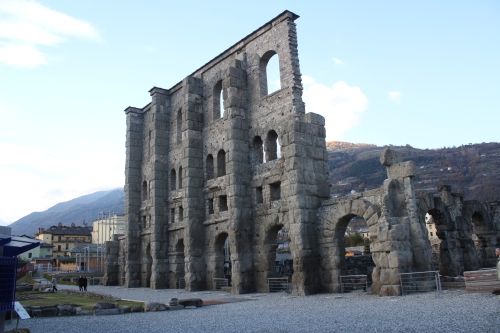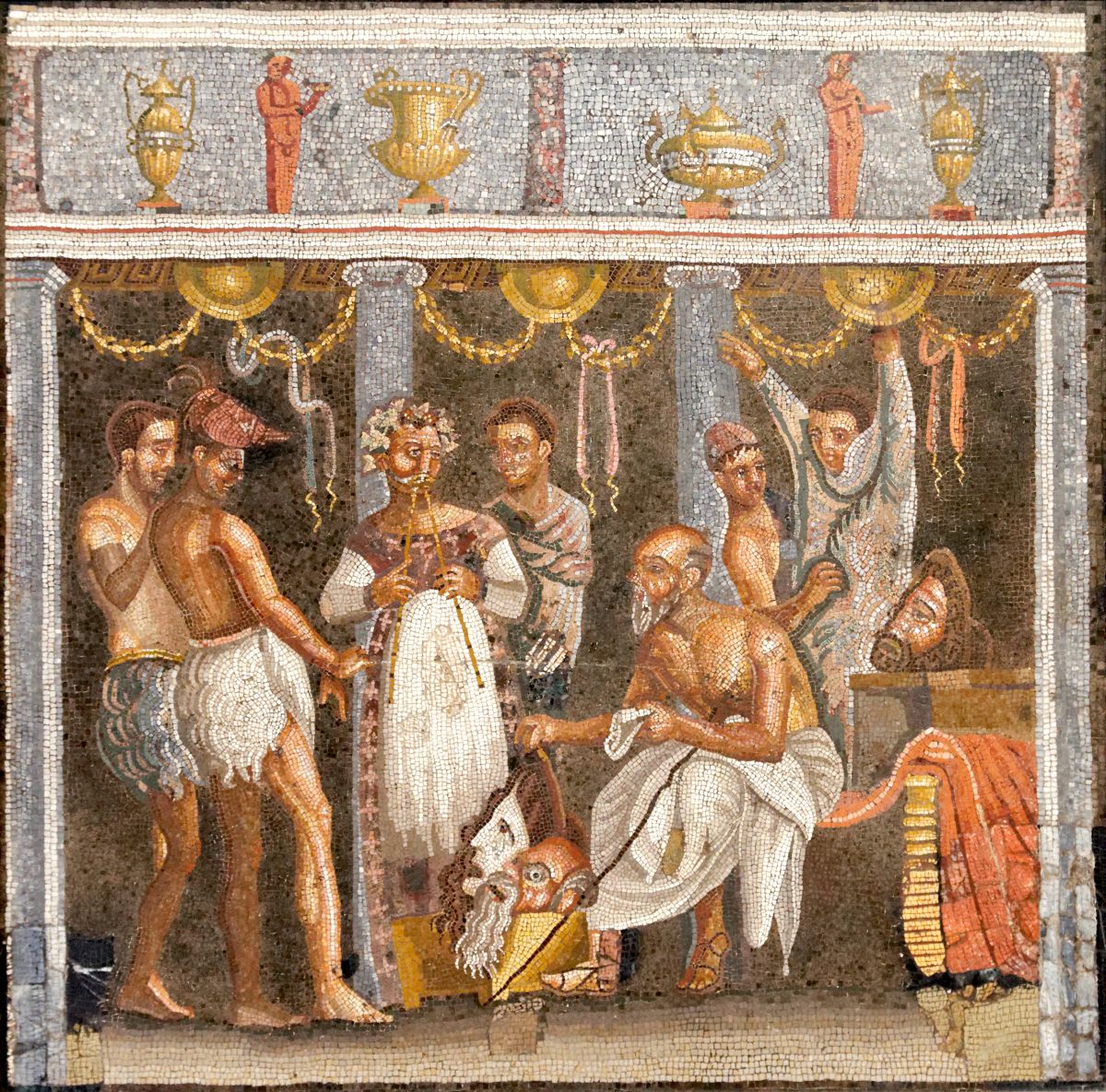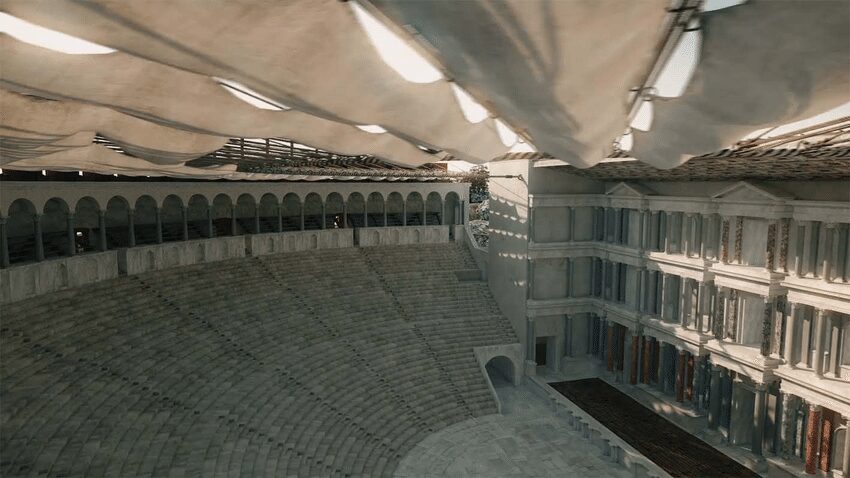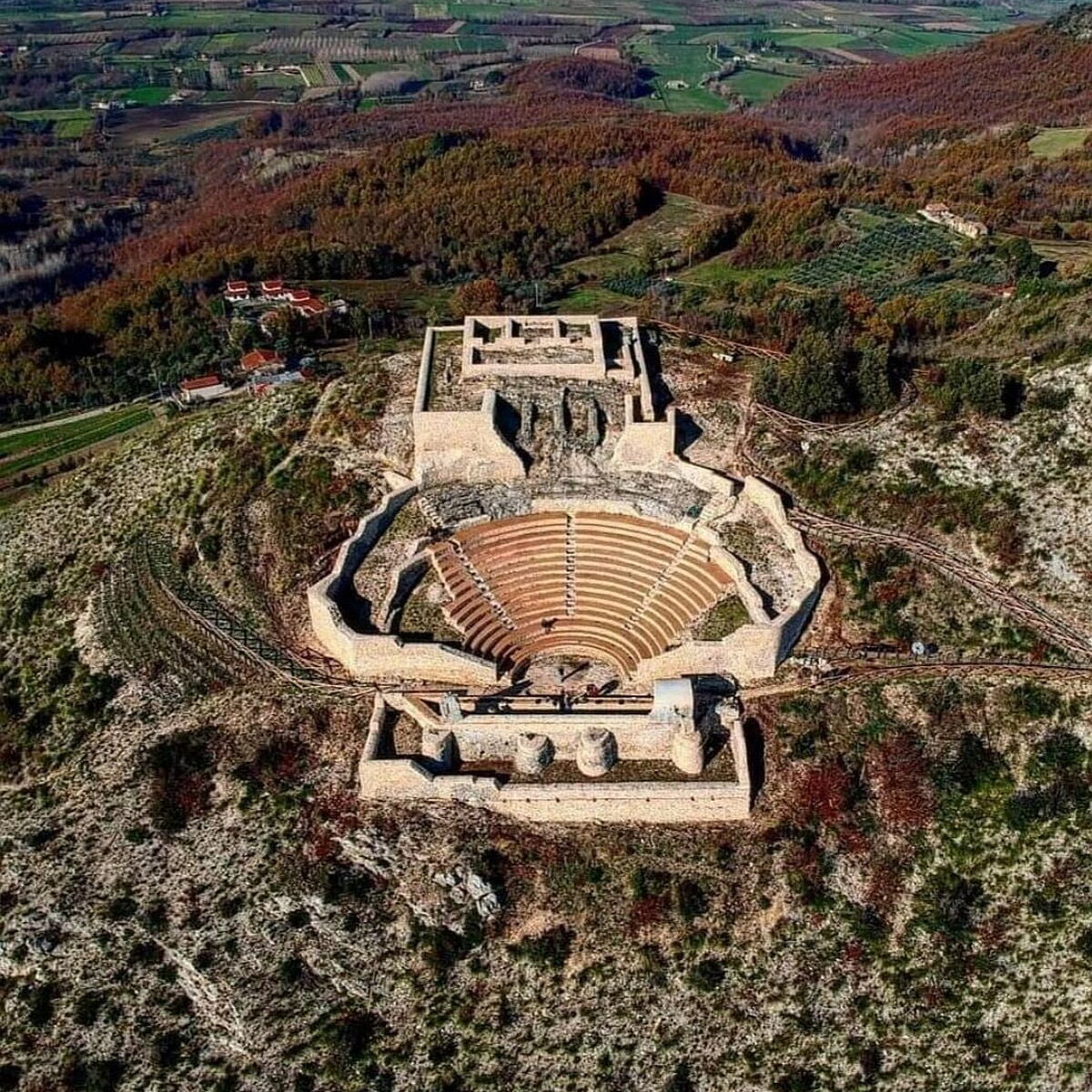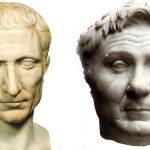Roman theater is an amazing phenomenon in the history of culture, combining Greek influence and original engineering solutions of the Romans. Although initially modeled at the Greek theater, he quickly gained his own unique character. Here are ten curiosities that will bring the fascinating world of Roman theater performances closer.
I. Actors were not respected by Roman society
Unlike ancient Greece, Roman actors had a rather bad reputation in Roman society. Their social status was somewhere between criminals and prostitutes. A Roman citizen who decided to perform on stage had to reckon with the fact that he was at risk of losing his political and civil rights, and what’s more, he could not join the army, and thus engage in politics. Most often, the actors were slaves or freedmen from the eastern provinces; although the first actors in Italy came from Etruria.
The development of Roman theatre was connected with the travelling nature of the early theatre. Acting troupes (comprising 4 to 6 actors) travelled around Italy and performed plays on temporary stages, usually built of wood. The acting profession required the ancient “stars” to be agile and in good physical shape – they sang, danced and recited songs in front of an audience.
The actors’ performances could be bawdy, very sexual and offensive, which led to criticism from the conservative Roman society. Often, actors would criticize the political scene of the state, which caused negative reactions from the authorities. The last emperor following the traditional Roman faith, Julian (reigned 361-363 CE) forbade Roman priests from attending theatrical performances in the so-called letter to Hecebolius, in order to deprive the plays of their prestige. Emperor Tiberius (reigned 14-37 CE), in turn, did not agree to any contact between actors and representatives of the upper classes. Tacitus describes Tiberius as severely treating actors who dared to openly criticize officials and mock the authorities on stage. Not only did he not allow actors to have contact with the elites, but he also punished them for immoral behavior and limited their influence in Rome. Praetors, in turn, were allowed to punish any indecent behavior of spectators with exile and to flog unruly actors.1
In the early Republic, women were not allowed to become actors, because of the inappropriateness of the profession. Women’s roles were played by men, often using masks. However, in imperial times, women’s access to acting was liberalized and many women became famous actresses, which was met with criticism from the male side of the profession. Famous female names include Fabia Arete or Bassillia2.
There were of course also acting stars. From preserved sources we know the names of two actors who achieved enormous popularity:
- Quintus Roscius Gallus(125-62 BCE) – a popular comedian who gained great popularity among the upper classes; he personally knew Lucius Licinnius Crassus and Lucius Cornelius Sulla.
- Clodius Aesopus – a famous tragic actor from the 1st century BCE, who left his son a huge fortune of 200,000 sesterces on his deathbed.
The more prominent actors had many friends in higher circles, which allowed them to arrange certain matters and make a fortune.
II. Roman theatres were originally built for festivals
Originally, Roman theatres were built in cities to accommodate upcoming festivals and the arriving troupe of actors. Such structures were usually made of wood and were dismantled after the event. Moreover, due to their weak and flammable construction, fires and disasters occurred – more about the famous building disaster in ancient Rome.
The first permanent stone structure where theatrical performances were to take place was built in 55 BCE – it was the Theatre of Pompey.
III. The Theatre of Pompey – the largest ancient theatre?
In 55 BCE, Pompey the Great served as consul with Marcus Crassus for the second time. In that year, in order to increase his support among the Roman populace, Pompey built the first stone theatre, the so-called Theatre of Pompey. The building was built on the southern part of the Campus Martius.
In the times of Republican Rome, the construction of permanent theatres was forbidden – they were considered a hotbed of immorality and a threat to strict civic virtue. To circumvent these restrictions, Pompey built a temple to Venus Victrix behind the theatre and officially declared that he was not building a theatre, but a monumental staircase leading to the temple (Tertullian’s account3). These stairs actually served as an audience.
According to Pliny the Elder, the building could accommodate 40,000 spectators4, which would make it the largest ancient theatre in history. However, scholars question this large number and believe that the audience could have seated up to 10,000 spectators. Regardless of the number, the audience (cavea) had a diameter of 156 meters.
Over the centuries, the theatre gradually lost its significance. Partially demolished, absorbed by newly constructed buildings, it remains hidden beneath modern Rome to this day. Fragments of it can be seen, for example, in Piazza di Grotta Pinta, where some buildings have a curved shape that reflects the former auditorium.
It is worth mentioning that Julius Caesar was stabbed to death in the portico of the theater during a session of the Senate in 44 BCE.5
III. The audience was very emotional
The audience in Roman theatres had a huge influence on the performances. Unlike modern theatres, where silence and concentration are expected, the Roman audience was extremely expressive and direct. The audience commented on the plays as they played, shouted praise for their favourite actors or expressed their dissatisfaction with boos and whistles.
Particularly noisy were comedy and pantomime performances, which enjoyed great popularity among the lower social classes. Sometimes, dissatisfied audiences would throw fruit, vegetables, and even stones at the actors. Juvenal recalls that the audience would demand that an actor be replaced or that a play be stopped if they did not like it6.
Emperors and patricians who financed performances often interfered with them to please the crowd. In some cases, organizers hired groups of spectators to applaud the performance and encourage the rest of the audience to respond enthusiastically. This type of hired “claque” was particularly common in the time of the emperor Nero (ruled 54-68 CE)7, who himself performed as an actor and poet – his performances are said to have been greeted with applause, although more out of fear than genuine admiration.
Suetonius describes8 how Nero would perform on stage and how there were times when the audience would get fed up with his performances but could not leave because the guards blocked the exits. This suggests that there were other situations where the audience could express their dissatisfaction.
In his satires, Juvenal9 in turn criticizes the superficiality and capriciousness of the Roman audience, suggesting that viewers easily changed their minds and demanded that the performances be stopped.
This loud and often unpredictable atmosphere made the Roman theatre more like modern football stadiums than today’s theatre stages.
IV. The roof system protected the spectators from the sun
According to Vitruvius10, a Roman architect of the first century BCE, some Roman theatres were covered with a giant sail (velarium) to protect the audience from the sun and rain. This was attached to large posts at the top of the building and anchored to the ground with large ropes. Operating this system required numerous sailors and specially trained workers who operated ropes and pulleys to control the position of the roof depending on the weather conditions.
V. Theater performances were free
Theatre performances in ancient Rome were public events, available to all citizens, because they were financed by the state or wealthy patrons (e.g. officials organizing the games). As a result, admission to them was free, which made the theatre very popular among various social classes, from plebs to patricians.
Titus Livy describes how, as early as the 4th century BCE, ludi scaenici – stage performances organized by the state as part of public festivals – were introduced: “This year, for the first time, to appease the gods, stage performances were given at the state’s expense”11. This shows that theatre was part of public celebrations and religious festivities, financed by the state12.
Roman politicians often used the organization of theatrical performances to gain popularity and gain the favor of the people. This was part of the system of panem et circenses (“bread and circuses”), which aimed to provide entertainment for the masses and distract them from social problems. Nero, who was a great lover of the arts and performed as an actor, singer and poet himself, organized numerous theatrical performances, which were intended to gain him popularity among the people of Rome.
During holidays and celebrations (e.g. Ludi Romani) various types of performances were performed:
- Comedy – often satirical, mocking everyday life and politics. Authors such as Plautus and Terence were popular.
- Tragedy – inspired by Greek drama, but less popular than comedy.
- Pantomime and mime – performances combining dance, music and simple, often vulgar or obscene scenes.
VII. Theatre Masks in Antiquity
The only ancient source of information about masks (personae) used in ancient theatrical performances is Julius Pollux, a Greek scientist from the 3rd century CE, who wrote the work Onomasticon13. In his work, he lists a total of 44 different comic masks that could be used during a performance. He lists, among others:
- Masks of old man (senex),
- Masks of a young man (adulescens),
- Masks of the slave (servus),
- Female masks – when men played women’s roles.
The main functions of masks on stage were to enhance expression through exaggerated facial features, making it easier for audiences to recognize emotions even from a distance; and to enable actors to play multiple roles and quickly swap identities.
A large amount of information and a general idea of what theatre masks looked like in ancient Greece and Rome are provided by preserved ancient artefacts, on which we find a recreated appearance of actors’ equipment. To this day, we discover, among others, oil lamps in the shape of theatre masks or cameos with engraved masks. No strictly theatre masks have survived to our times; this is due to the fact that they were made of organic materials, which had practically no chance of survival.
Antique masks were certainly beautifully decorated and very colorful, which only enhanced the reception of the actor’s performance, from whose mask the daylight was reflected. It should be remembered that, unlike modern theaters, in antiquity such facilities were open, and the sun helped to create the appropriate spectacle.
As indicated by the latest research (including 2007 by a team of researchers led by Dr. Amy R. Cohen), in large and open theatres, both the shape of the object and the masks themselves amplified the actor’s voice. As it turns out, the actor wearing a mask spoke in a lower tone and had a clearer voice. It should also be noted that the size of the mask and the distance from the actor’s face caused the voice to resonate. What’s more, the mask allowed the audience to hear the actor’s voice better, without having to specifically direct it towards them. For example, an actor with his back to the audience section, if he didn’t have a mask on his face, was very faintly or not at all audible.
VIII. Theaters were built everywhere
The ancient Romans built theatres in every major settlement that reached the status of a colony or an important city. Many of these structures have survived to this day and can be admired in the most remote areas that the Roman Empire had under its rule. Examples of buildings:
- Theatre of Orange (France) – one of the best-preserved Roman theatres, famous for its monumental scaenae frons (richly decorated stage wall).
- Theatre of Mérida (Spain) – an impressive theatre built in the time of Augustus, which is still used for theatrical performances.
- Roman Theatre at Londinium (London, England) – discovered by archaeologists, provides evidence of the influence of Roman culture in Britain.
- Theater in Aspendos (Türkiye) – one of the best preserved Roman theaters in the world, still serving as a concert venue today.
IX. Heroes of Roman Comedies
The heroes of Roman comedies originated from Greek new comedy14 (Menander), but were adapted to Roman reality. Roman comedy, represented mainly by Plautus and Terence, operated with a set of fixed characters, each of whom had characteristic features:
- Adulescens – a young, rich, not very brave, but in love hero. He tends to lament his fate and expects support. Another hero often has to take action on his behalf. His father is an old man (senex), whom he fears but does not respect. He wears a dark wig and his clothes are usually scarlet.
- Senex – the old man has several incarnations. As a father, he is too strict or too submissive. As a lover, he causes problems in relationships with his son, slave and wife. The woman he loves is usually his son’s chosen one and is definitely younger than him. He never manages to win a woman, and he himself is controlled by his wife. Sometimes he is a family friend who helps the youth (adulescens). He is often a miser, dressed in simple white clothes with long sleeves.
- Leno – manages a brothel. He often deals with adulescens who visit his brothel. He is immoral and interested only in money. He dresses in a tunic with a money pouch on the side and is often bald.
- Miles gloriosus – literally “the bragging soldier”. He loves himself more than anyone else. He sees himself as a beautiful and brave legionnaire, when in reality he is stupid, cowardly and gullible. He is usually in love with the same woman as adulescens. He wears a long-sleeved tunic and has curly hair.
- Parasitus – a “parasite” who lives only for himself. Often seen as a beggar asking for a meal, which is usually denied to him. He lies for his own gain. He dresses in a long, black robe with long, double sleeves.
- Servi – slaves make up about half of the cast. They often have most of the monologues. They are not typical slaves from Roman households. Servus callidus or “intelligent slave” is usually very talkative. He is loyal to his masters most of the time – more of an adulescens than a senex. He is often the source of the action. He is dressed in a tunic and wears scarves.
- Ancilla – a maid or nurse of indeterminate age. Her role is to present information or help other characters. She is a tool of her mistress, who often uses her as a transmitter of information.
- Matrona, mulier or uxor – a mother, woman or wife is cunning. She loves her children but is temperamental towards her husband. She does not have to be a devoted wife, but sometimes she is. She wears a long robe with flowing sleeves and a cloak.
- Meretrix – a prostitute in love or working for money. The first type is a younger girl, in love with adulescens, while the second type is an old woman, experienced by life. Both women are very attractive, with a meticulously prepared hairstyle and yellow outfit.
- Virgo – a bride who is the love object of adulescens. She does not play a big role. She is beautiful and virtuous. Treated in art as a form of reward.
X. Roman Innovations in Theatre
The Romans, although inspired by Greek theatre, introduced numerous innovations that revolutionized the way theatres were constructed and performances were organized. Their innovative approach made theatres more accessible, spectacular and convenient for the audience. Here are some of the key innovations of the Romans in theatre:
Permanent stone theatres
While the ancient Greeks built their theatres on natural hillsides, the Romans developed techniques that allowed them to erect monumental structures on any terrain. The key role was played by the use of concrete (opus caementicium), which allowed the construction of huge structures regardless of the terrain.
Improved acoustics and better visibility
The Romans improved the layout of the audience, creating a semicircular amphitheatrical seating arrangement (cavea), which provided excellent visibility and better acoustics. Thanks to the precise construction, the actors’ voices carried even to the furthest rows, and the audience could enjoy clear sound without the actors having to raise their voices.
Rich scenography and monumental scaenae frons
One of the most characteristic features of Roman theatres was the scaenae frons, a monumental façade that formed the backdrop to the stage (a prime example is the Roman theatre in Palmyra, Syria). Unlike Greek theatres, which had relatively simple backdrops, Roman theatres had multi-level sets with columns, niches and sculptures. Some theatres even had mechanisms to change the scenery, allowing for more dynamic and spectacular performances.
Velarium – sun protection
One of the most practical inventions of the Romans was the previously mentioned velarium, a huge canvas cover stretched over the auditorium to protect the audience from the sun. This was an innovation particularly important in the hot climate of Rome and the provinces, where theaters were often used all day long.



